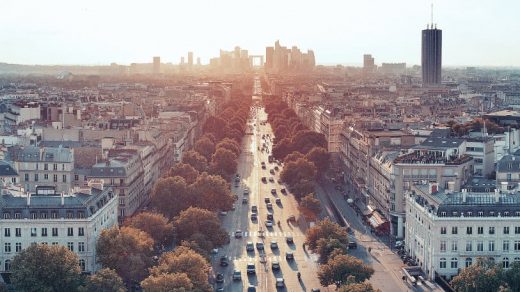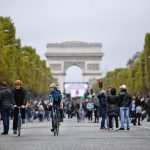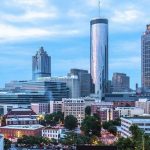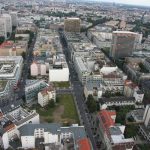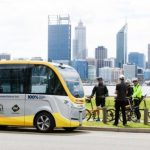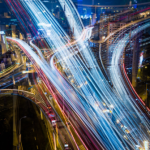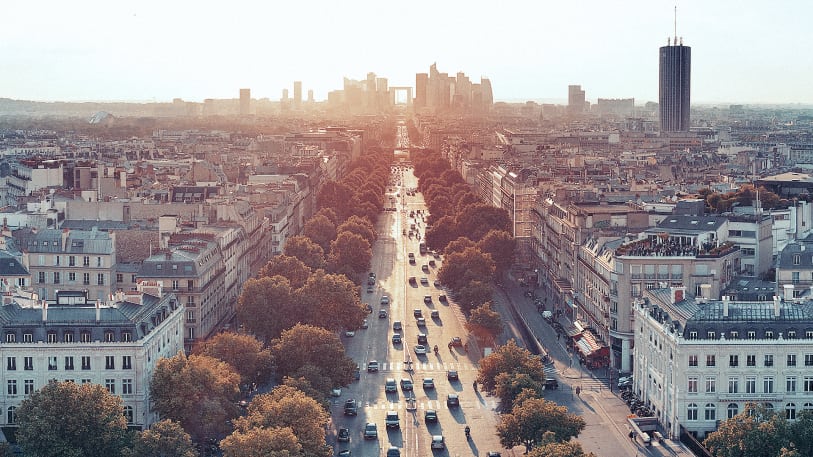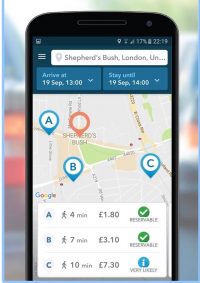Inside Paris Mayor Anne Hidalgo’s Ambitious Plans To Create The Post-Car City
A year ago, the Georges Pompidou highway next to the right bank of Paris’s Seine River was filled with traffic. Now it’s permanently car-free. Later this month, a new park will open on the site, covering part of the road with playgrounds and grass. Cafes and a free bike workshop will open by the summer.
It’s one part of the city’s transformation of transportation away from cars, led by a mayor who has called personal car ownership “archaic.”
“Unparalleled challenges like air pollution require unprecedented action,” Paris Mayor Anne Hidalgo tells Fast Company. “These policies are based on the urgency of both the health crisis and the climate crisis we are facing.”
A new electric “tram-bus” will soon replace two lanes of traffic on another major road in Paris. As of January 2017, the most polluting, oldest diesel cars are banned from city streets during the day; all diesel cars will be banned by 2025. The city is running trials of a driverless electric shuttle in a dedicated lane between two train stations and will soon test electric taxi boats. A new bike path will be built in the middle of the Champs-Élysées, part of a plan to double bike lanes from roughly 430 miles in 2015 to 870 miles by 2020, including “express” bike lanes separated from traffic. Major intersections are being redesigned to favor pedestrians, not cars. The city hosted a car-free day in 2015 and 2016. New devices will track emissions from cars in real time. The ultimate goal: fixing the city’s pollution problem.

Air pollution kills 48,000 people a year in France, causing illnesses such as lung cancer, stroke, and heart disease; living in a large city like Paris can shorten someone’s life-span by 15 months. Pollution from transportation is also a large part of the city’s carbon footprint, and transforming transit is one way that cities can help lead global climate action.
“More than half the world’s population lives in cities, a figure that will rise to 70% by 2050,” says Hidalgo. “Cities are already responsible for 70% of carbon emissions. Cities are where the future happens first. All of which means that mayors have an obligation to drive innovation and action. Mayors are on the front lines, especially when it comes to the greatest threat that our cities face–climate change.”
While national governments tend to move more slowly on climate policy, cities are pioneering climate solutions in transportation–often through urban design or procurement policies, but also by putting pressure directly on manufacturers. In December 2016, Hidalgo, along with other mayors in C40, a global network of cities committed to addressing climate change, launched a petition calling on vehicle manufacturers to move more quickly to adopt electric, hydrogen, and hybrid cars.
Hidalgo, who was elected as chair of C40 in 2016, has also launched the organization’s Women4Climate initiative, which aims to showcase women climate leaders, explore how women are disproportionately affected by climate change, and empower young leaders to “carry the fight forward.” In March, Hidalgo hosted a conference for the initiative in New York City, one of several gatherings that brings together mayors to connect and collaborate on an urban agenda to limit global temperature rise 1.5 degrees Celsius.
“The transition to a clean energy mobility system is underway largely due to the leadership of cities around the world, from Paris to Bogotá, from Tokyo to Mexico City,” says Hidalgo.”Unlike federal governments or private companies, city leaders hold jurisdiction over public transit options, and can drive large-scale deployment by electrifying municipal vehicle fleets, adding bicycle lanes, limiting the number of cars through incentives or taxes, and implementing policies to encourage a clean transport revolution.”
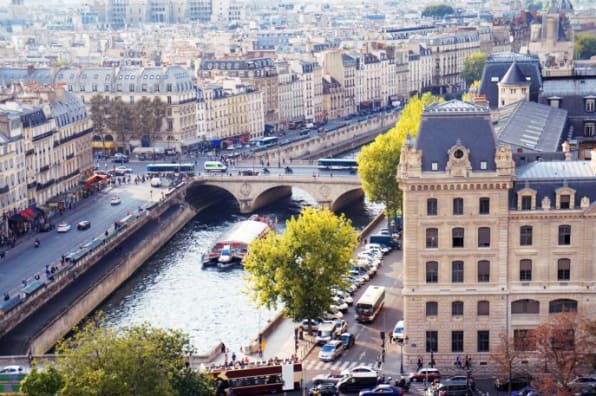
In Paris, the shift to more sustainable transportation began before Hidalgo, following a push for more cars in the city during the 1960s and 1970s. The express lanes next to the Seine were built in 1967, after Georges Pompidou–the former prime minister and president of France–advocated for the highway (which was named after him) and other new infrastructure for cars. “The French love their cars,” he said at the time. But by the 21st century, things changed.
Bertrand Delanoë, who was mayor of Paris from 2002 to 2014, introduced the city’s massive, pioneering bike-share program in 2007. Autolib, the city’s electric car sharing service, launched in 2011. Delanoë closed the left bank of the Seine to cars in 2013, and began the process to lower speed limits throughout the city. These policies helped cut traffic 30% over the last 15 years. Hidalgo, elected as the city’s first female mayor in 2014, is continuing that work–and arguably moving even more aggressively.
When she announced that the Pompidou highway would be closed to cars, some commuters complained that they’d spend more time driving to work, and increase traffic (and pollution) elsewhere. One local newspaper studied traffic patterns and concluded that traffic was increasing on other roads. But the city believes that any negative effects are temporary, and that the amount of total traffic will be reduced as people shift to alternate transportation.
Hidalgo says that she hasn’t tried to sell Parisians on the changes. “Marketing is not my way to do politics,” she says. “Instead of wasting time and energy trying to convince through an elaborate marketing campaign, I deliver real solutions that speak for themselves and benefit the people of Paris. And as a mayor of Paris, I am proud to deliver all my commitments to my people.”
When people experience each change, she thinks that they will be swayed. “Once every month we close the Champs-Élysées to traffic,” she says. “When you walk through the crowds of Parisians and tourists enjoying this iconic space, it removes any doubt that you might have that pedestrianization will benefit all, resulting in a cleaner, safer, and more beautiful Paris.”
Hidalgo seems to be right: Voters want a change in transportation. Hidalgo is helped by the fact that inside city limits, where her electorate lives, most people can easily take the metro, walk, or otherwise get around without cars. (Suburban commuters are more likely to be affected; the government is also working to expand suburban transit options, including new metro lines). A member of the Socialist Party, Hidalgo campaigned in support of the environment, making promises about launching Paris’s electric car sharing program and other alternative transportation. Polls show the majority of Parisians support her.
“The mayor was elected to make positive change with mobility, and these kinds of policies to reduce space for cars in favor of other modes of transport,” says Lorelei Limousin, transport and climate policy officer for the French branch of the nonprofit Climate Action Network. “So it’s important to say that it’s quite coherent with the votes of the people in Paris. And when you see the polls about the pedestrianization of the riverbanks, the majority of people are in favor of it.”
The changes, though radical, are still in the early stages. The planned network of new bike lanes, for example, has mostly not yet been built.
“The mayor of Paris launched a plan for cycling, which is quite ambitious, but only a little has been realized,” says Limousin. “It needs a lot more.” Once that’s developed, Limousin says, it will have cascading effects on the whole transportation system, helping some people move from the city’s overcrowded subway to bikes, freeing up more room on public transit for people who are still driving.
A new report commissioned by the city looks at how much more the transportation system–along with everything else–would have to change for Paris to reach a goal of carbon neutrality by 2050. The number of cars in the city would be cut in half, thanks in part to car sharing. By 2038, the report envisions, the city would be car-free every weekend. Because commuting is a major source of emissions, more companies would allow working from home or a neighborhood coworking office. Every vehicle left on roads would be non-polluting.
“I doubt we will ever see a car-free city, but we must see cities free from polluting vehicles,” says Hidalgo. “That is why we are working every day to create a green city ready for the future.”
(91)

